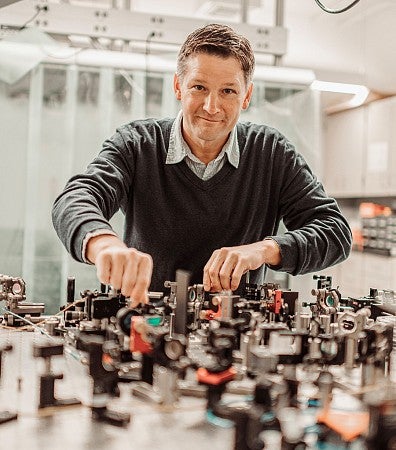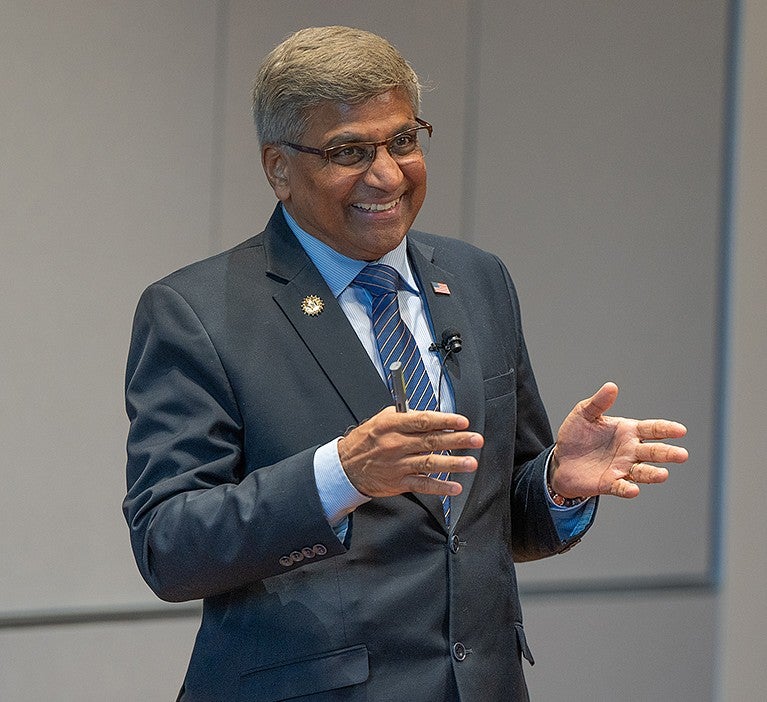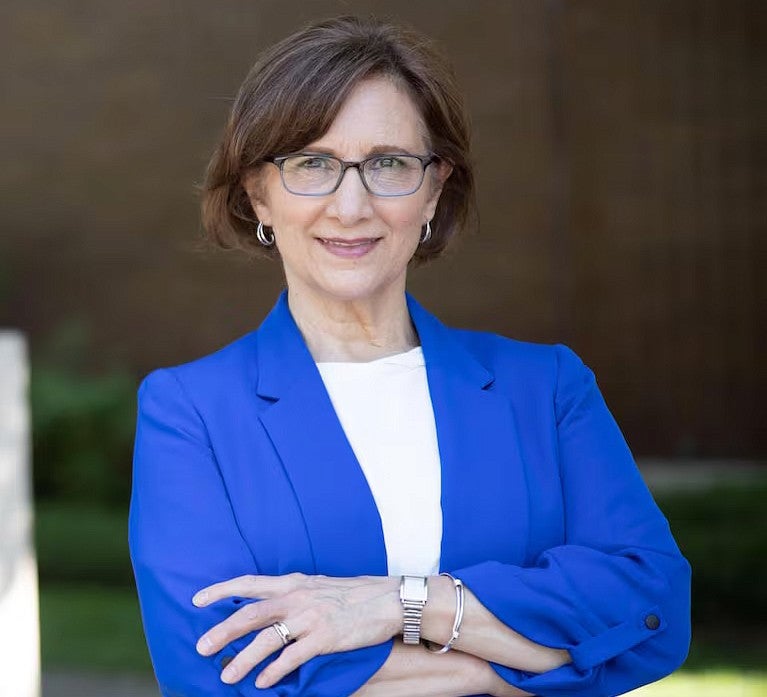
NSF picks the UO to pilot National Quantum Virtual Laboratory
The university is one of six sites selected to speed development of quantum technologies
The National Science Foundation has awarded a one-year, $1 million grant to a team led by University of Oregon researchers exploring practical applications for emerging quantum technologies and working to move discoveries beyond the lab.
Drawing on UO expertise in optical quantum technologies, the consortium will work on next-generation data networks and sensors.
“We’re excited about this project,” said Brian Smith, a professor of physics and director of the Oregon Center for Optical, Molecular and Quantum Science. “Oregon has a small group of proficient researchers leading the way globally in quantum technology.”
The collaboration includes the University of New Orleans, University of North Dakota, University of Illinois Urbana-Champaign, University of Colorado Boulder, National Institute of Standards and Technology, HRL Laboratories and Boeing.
The initial year of funding launches a planning stage, the first of three potential phases for the consortium.
The team will compete again for a $2 million NSF award funding a two-year design period. If it’s chosen to advance to the five-year implementation phase, the funding increases to $7 million to $10 million per year.

The project is one of six such new pilots nationwide, joining an initial group of five projects announced by the NSF in August.
“I enthusiastically supported the National Quantum Initiative Act, which will increase funding for quantum centers and build infrastructure for advanced research. Quantum research promises to generate breakthroughs that strengthen our scientific enterprise, grow the economy, and maintain U.S. leadership in cutting-edge science.”
Quantum information science and technology aims to harness the counterintuitive behavior that individual atoms and photons, or “light particles,” display to engineer new technologies.
One phenomenon of this strange, tiny universe is known as entanglement. It forms the foundation of the UO team’s research.
Entangling particles, opening doors
In quantum mechanics, individual particles such as electrons and photons can manifest a special bond, known as entanglement, that transcends time and space. When one particle is measured, its partner can display a correlated measurement instantly, even if it’s thousands of miles — or light years — away.

In the early days of research into quantum mechanics, Albert Einstein was skeptical of such “quantum weirdness” and called entanglement “spooky action at a distance.”
But since then, it’s evolved from an abstract physics concept to a basic resource for quantum technology with vast potential for science and industry.
For researchers, entanglement is tantamount to tightly correlated communication between distant points in a network — the same kind of interconnected webs employed by computers, data networks and telescope arrays used by astronomers.
By creating, manipulating and measuring entangled particles, they’re opening new doors.
“Akin to the nature of entanglement itself, NSF is building the National Quantum Virtual Laboratory to serve as a national resource unconfined by the limitations of distance and space — or the boundaries of laboratory walls,” said NSF Director Sethuraman Panchanathan.
Democratizing access and building national quantum science and technology capacity is part of the NSF’s strategy to fulfill the advancements identified in the 2018 “National Quantum Initiative Act.”
“The role our research core facilities will play demonstrates the power of scientific collaboration and the importance of federally funded, cutting-edge instrumentation,” he said.


Networking opportunities
Most quantum networks use atoms, but UO scientists will create theirs with photons. These quantum particles represent the smallest known component of light.
Their novel approach will help make the network faster, Smith said. The team has a bespoke telescope on the roof of Willamette Hall on the Eugene campus and plans to create a photon in the lab entangled with a photon in the telescope.
But a rare, powerful 16-node quantum networking test bed will serve as their main scientific sandbox.
One of a few such high-tech platforms in the world and among the first in the U.S., the test bed can distribute entanglement at rates more than five orders of magnitude greater than current approaches and over distances of up to a hundred kilometers.
Quantum networks hold great promise for sensors such as those in telescopes because of their potential to share data across vast distances.
For instance, Smith said, a quantum network could measure seismic waves across hundreds of miles to detect earthquakes or troop movements. It could also predict when one computer among thousands in a massive server farm is about to fail.
Photon-based networks also could offer ironclad security and new ways to connect computers.
Smith envisions a startup, for example, leasing quantum computing power over a network, confident it would be impossible to steal its proprietary data. Or election votes could be tallied by a network that’s inherently accurate and impossible to hack.
By applying the unique properties of quantum networks, computers could solve currently intractable problems. And new biomedical sensors could provide doctors with cellular-level information about their patients.
A scientist who studies light, he likens the project to inventing the laser. For centuries, light came from thermal sources like the sun, fire or hot metal. Then lasers offered controlled, directed light with radically different properties. But nobody knew what to do with them.
Today, lasers are a ubiquitous necessity for society and industry, with applications as diverse as the grocery checkout line and the surgical suite.
The fields that could benefit from quantum networks include medicine, chemistry, biology and astronomy, as well as industries ranging from banking to energy exploration.
“It’s a new tool,” Smith said. “Sometimes to push science forward you make a new hammer and then you look for a nail.”

